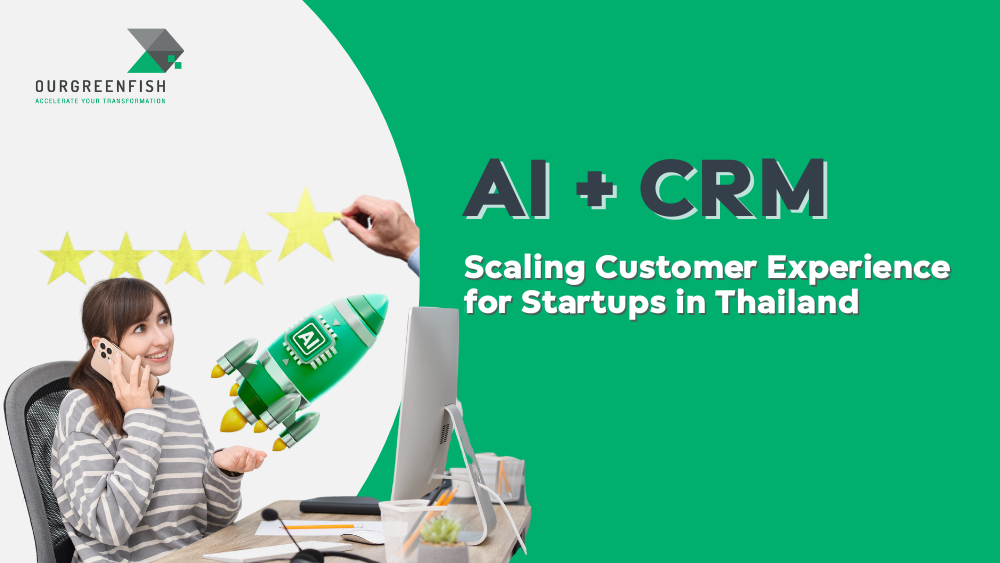The KPI Mirage: When “Growth” Isn’t Really Growth
In startup boardrooms across Bangkok, Chiang Mai, and even Khon Kaen, founders are celebrating new milestones—more website visitors, more social media followers, more app downloads. Yet a quiet truth haunts many: none of this guarantees sustainable growth.
The problem? Confusing popularity with progress.
In Thailand’s emerging but competitive startup ecosystem, this mistake is not only common—it’s costly. Tracking the wrong KPIs can inflate confidence, misguide strategy, and ultimately lead to decisions that burn time, money, and market goodwill.
Vanity Metrics : The Hidden Threat in Your Dashboard
Metrics like pageviews, likes, impressions, or even bounce rate often feel rewarding. They're easy to access, visually satisfying, and seem to confirm momentum. But as Eric Ries noted in The Lean Startup, these are “vanity metrics”—they make you feel good, but they rarely help you make better decisions.
Take this common Thai startup example: a DTC skincare brand sees a surge in Instagram followers after a KOL campaign. But post-campaign, the sales flatline. The team celebrates “awareness” while ignoring Customer Acquisition Cost (CAC) or Conversion Rate from Instagram Traffic.
Reality Check: If the followers aren’t converting, they’re not prospects—they’re digital noise.
The Thai Context : Why Local Buyer Behavior Matters
Thailand has a unique digital consumer culture. Consider these key characteristics:
- Platform loyalty: Many Thai buyers prefer LINE Official Account over email. Yet startups still track email open rates as a key success metric.

- Group purchasing: Thai consumers often coordinate purchases via group chats (LINE or Facebook), making traditional individual conversion metrics misleading.
- Cultural buying patterns: Many Thai buyers do not purchase on first contact. Long nurturing cycles are typical—especially in B2B and healthcare sectors.
Thailand Tip: If your KPIs don’t account for the time it takes to build trust with Thai customers, your funnel projections are flawed.
What to Measure Instead : Strategic KPIs That Move the Needle
To break away from vanity metrics, startups in Thailand must ask: What truly reflects progress toward business goals?
Here are 4 strategic KPIs that align with local market realities:

- Customer Lifetime Value (CLV)
Not just how many users you attract, but how much each user is worth over time.
- In Thailand, recurring revenue from loyalty is often higher than new customer acquisition, particularly in sectors like wellness, e-commerce, and edtech.
- A loyalty-focused CLV strategy can reduce acquisition pressure by increasing revenue per user.
📌 Tip: Use LINE CRM + HubSpot integration to track CLV through repeat purchases, especially in long-term segments like health or education.
- Customer Acquisition Cost (CAC)
Your growth isn't healthy unless it's cost-efficient.
- Thai startups often run ad-heavy campaigns on Facebook or TikTok, but few calculate CAC by channel.
- Add CAC to your dashboard before celebrating engagement metrics—especially if you’re funding growth through investor capital.
ROI begins where CAC ends.
- Lead-to-Customer Ratio
Measure the actual efficiency of your funnel—not just how many leads you generate.
- Thailand’s B2B cycle (particularly in SaaS and services) can stretch across 60–90 days.
- Focus on how leads convert through nurturing campaigns rather than lead volume alone.
A large database means nothing if only 3% convert.
- Return on Investment (ROI) — Not ROAS
While Return on Ad Spend (ROAS) is common, it doesn’t account for cost of goods sold, support, churn, or time lag between ad and purchase.
- In Thailand’s fragmented media landscape, measuring holistic ROI—including operations, fulfillment, and returns—is more insightful.
- This is especially true for startups in physical product sectors like fashion or skincare, where logistics costs fluctuate by province.
Want scale? Measure profitability, not just ad response.
Don’t Just Track—Align
According to KPI Mastery by Success Blueprints, “KPIs are the compass that guide an organization toward its overarching goals. But only if they are aligned” Alignment means:
- Building KPIs based on your stage of growth
- Considering your sales cycle length
- Adapting to Thai-specific user behavior
- Making sure each KPI answers the question : Does this move us closer to sustainability or scale?
>>> OPTIMIZE TOUCHPOINTS : 5 GROWTH STEPS FOR STARTUPS IN THAILAND
Common KPI Missteps by Thai Startups
- Tracking global best practices without localization
Western models favor email metrics—Thailand is LINE-first. - Over-prioritizing paid traffic without nurturing automation
High CAC, low ROI cycles burn through cash fast. - Treating all KPIs as equal
Outcome KPIs (like CLV, ROI) are more powerful than performance KPIs (click-through rates)
Closing Thoughts : Measure What Truly Matters
For startups in Thailand, your dashboard can be your biggest ally—or your most subtle enemy. Measuring the wrong things doesn’t just waste time—it shapes the wrong behaviors.
In a country where relationships matter as much as reach, and where platforms evolve faster than your quarterly strategy, the winners will be those who measure what matters, not what’s easy.
The next time you open your KPI dashboard, ask not, “What’s going up?” but instead, “What drives real impact?”
References : Success Blueprints. (2024). KPI Mastery: Measure What Matters!. Retrieved from https://successblueprints.co/shop/kpi-mastery-measure-what-matters/
Read more articles :
Modern Marketing Strategies for TECH STARTUP (กลยุทธ์การตลาดสมัยใหม่สำหรับ TECH STARTUP)
Contact us
Tel : +66 2-0268918
E-mail : contact@ourgreen.co.th
Website : ourgreenfish.com

.webp?width=158&height=85&name=New-logo-Ourgreen%20(1).webp)









.png?width=300&name=Enabler%20Commerce%20(2).png)








No Comments